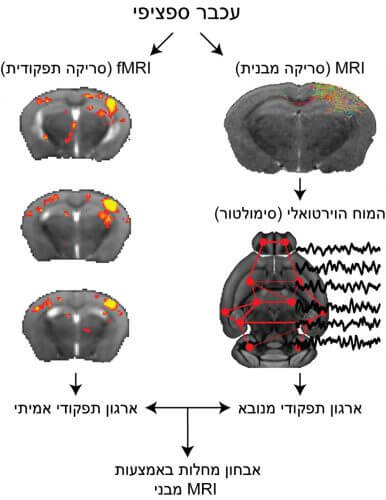The study was conducted at the Rapaport Faculty of Medicine at the Technion

Research conducted at the Technion and published in PNAS - the journal of the American Academy of Sciences - is expected to promote personalized treatments for brain diseases. The research, conducted in mice, shows that each individual has a "structural fingerprint" in the map of neural connections in the brain. This fingerprint is the basis of the brain function of the specific individual.
The research was conducted in collaboration between researchers from the University of Aix-Marseille and the INSERM Institute and the Allen Institute in the United States and the head of the Laboratory for the Organization of Brain Systems in Health and Disease, Prof. Itamar Kahn from the Rapaport Faculty of Medicine; Jointly led by PhD student Eyal Bergman, who is studying in the combined MD/PhD track at the Technion, and PhD student Francesca Melozzi from the University of Aix-Marseille.
The researchers scanned the brains of the 19 mice tested in the experiment with an MRI (structural-anatomical scan). It is a routine structural image that provides a sort of map of the brain, including the connections between different areas within it, similar to a map of roads connecting different cities.
Based on simulations, the researchers predicted the functional organization of each of the mice's brains and verified their prediction against fMRI scans (functional scanning) of those mice. Thus they showed that each individual has its own unique map, and that the simulations predict well the functional organization based on that structural fingerprint.
The aforementioned discovery, which is of great importance at the level of basic research, has significant potential consequences also in the context of treating brain diseases such as Alzheimer's, depression and epilepsy. This is because these diseases, which result in part from changes in the same "road map" of the connections in the brain, are characterized by different patterns of change in different patients. According to Prof. Kahn, "Simulations of this type will make it possible to identify, based on a structural MRI, the expression of the disease and perhaps even the stage of the disease in the brain of the specific person, and tailor a specific treatment for him. This option is in line with the current prevailing trend in the world of medicine - personalized treatment.
